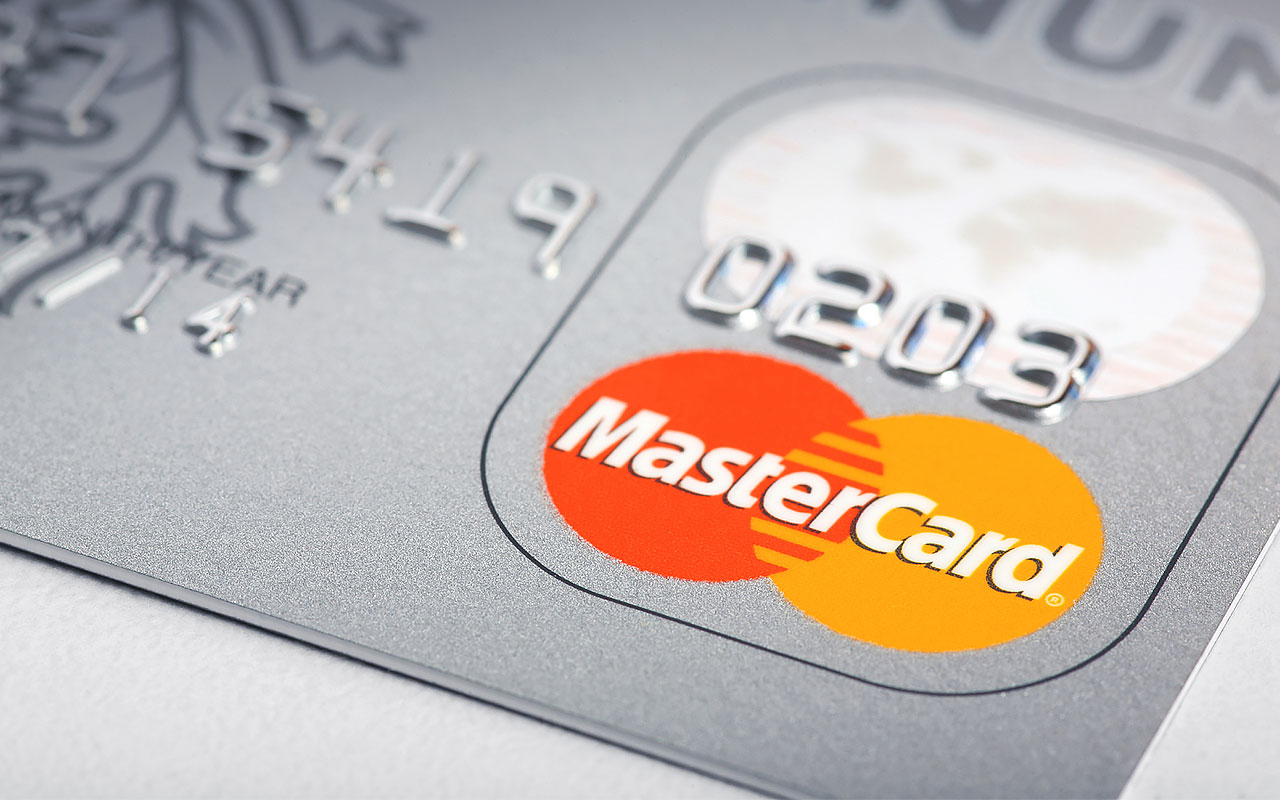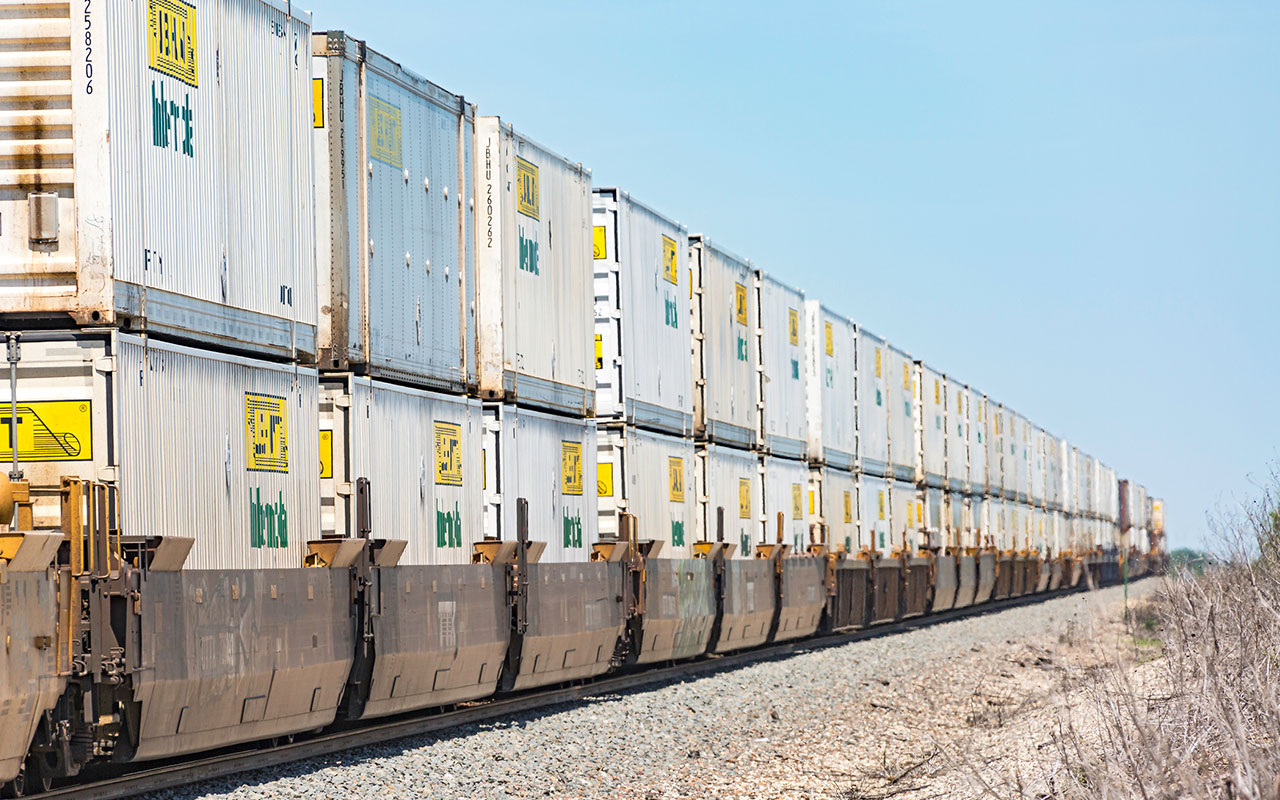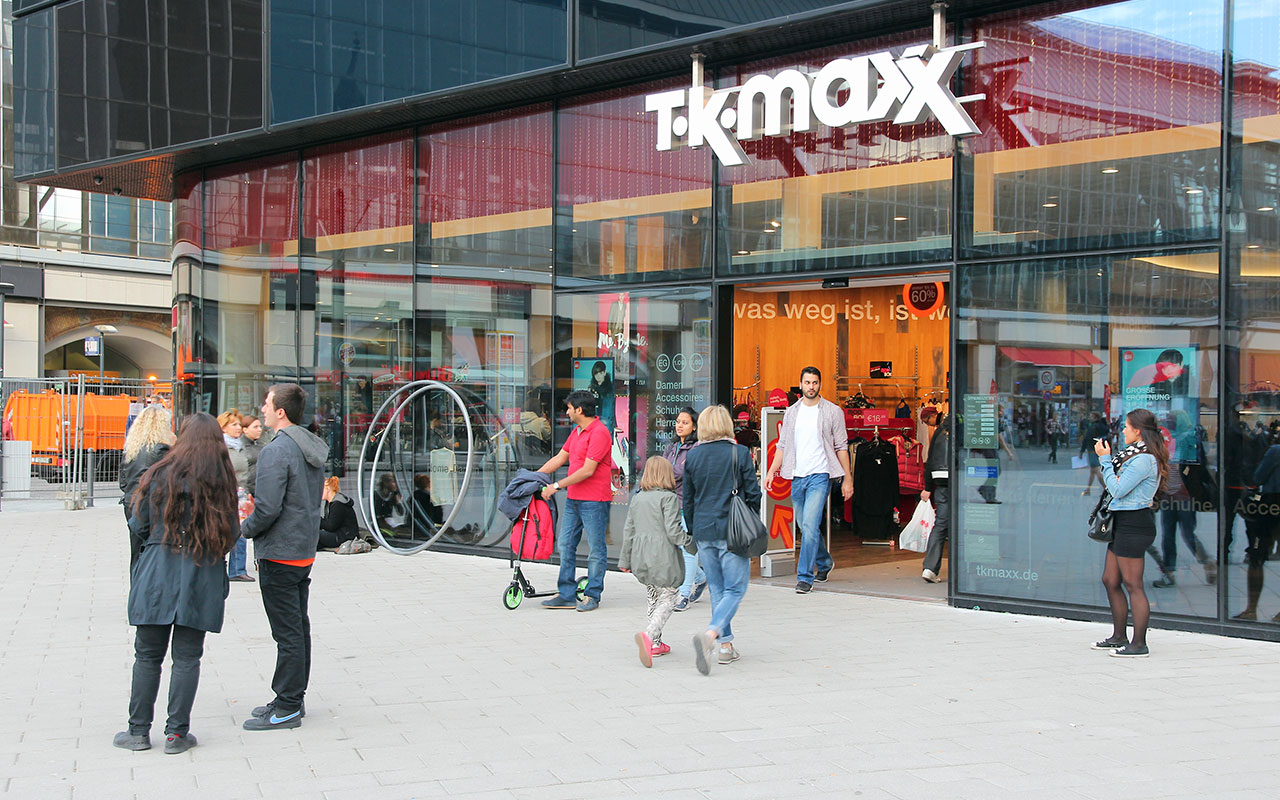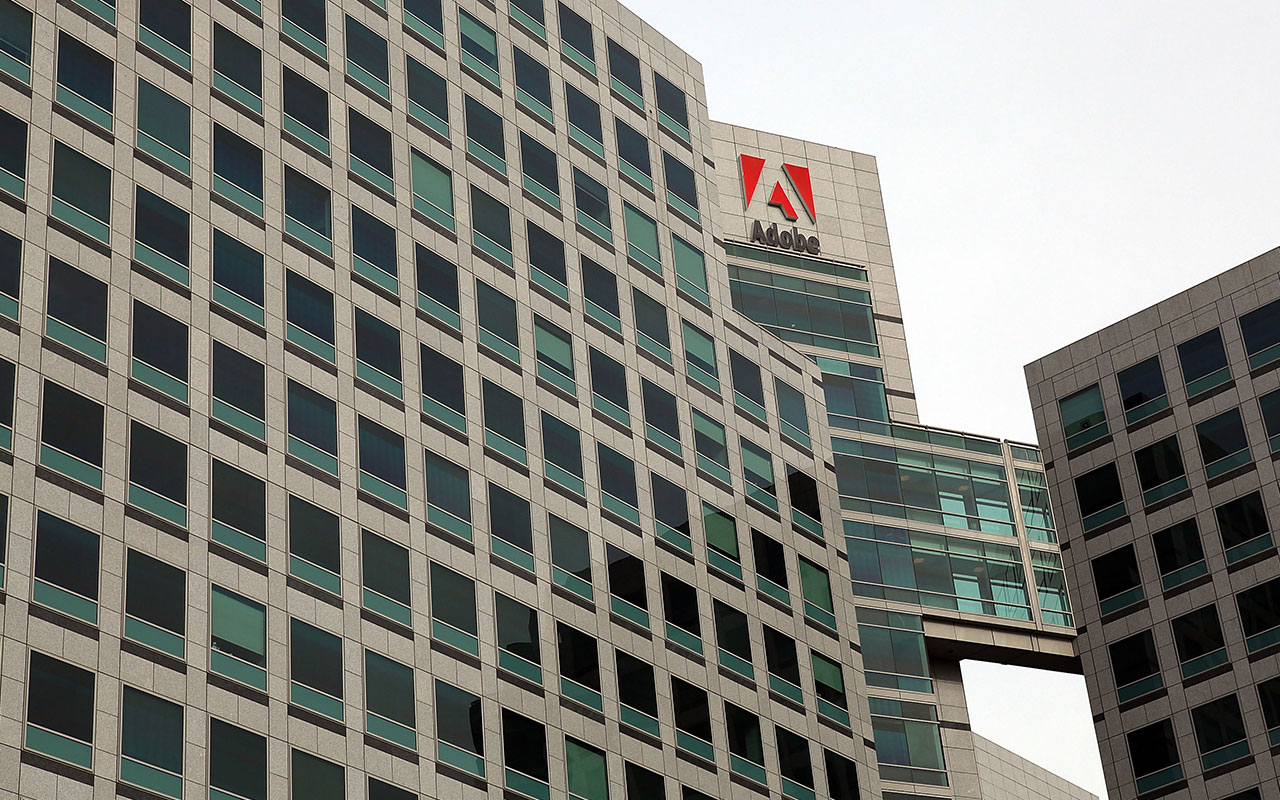12 Blue-Chip Stocks With Red-Hot Growth Estimates
Much of the market was shelled in October and November – even no-doubt blue chips that typically can take a beating.


Much of the market was shelled in October and November – even no-doubt blue chips that typically can take a beating. But the economic undertow still is mostly pointed in the right direction.
Economic growth continues to be robust, unemployment is lean and the Federal Reserve finally looks like it’s at least considering a slightly dovish stance on interest rates. And while the Democratic takeover of the House had some investors worried about gridlock, some experts view it through bullish-tinted glasses.
“We think markets likely view this outcome as positive since it removes the risk of an all-Democratic Congress,” Evercore Managing Director Terry Haines told Bloomberg, “and the increased Republican Senate majority offers additional assurance that the 2017 tax cuts would not be rolled back in 2021 in the event of a Democratic president.”
In that light, it’s easy to assume the best and start seeking out aggressive, high-growth, high-risk names. But it’s incorrect to think only risky stocks are capable of producing strong growth. Sometimes big, well-established old-school names are surprisingly capable of putting up some big numbers, too: all the reward potential, with much less risk.
Here are 12 top blue-chip stocks that still sport impressive growth and/or profit estimates – even against the backdrop of a (very) mature economic growth cycle.
Disclaimer
Data is as of Nov. 28, 2018.

Valero Energy
- Market value: $33.7 billion
- Dividend yield: 4.0%
You wouldn’t know it from the coverage of the recent oil-price downturn, but crude is actually still in a bullish uptrend in the medium-term. Ultimately, that should be beneficial for most of the sector, but some oil stocks are better positioned than others to ride an eventual return to the recovery.
Stoyan Panayotov, CEO of California-based Babylon Wealth Management, thinks Valero Energy (VLO, $79.42) is one of those top prospects.
“As the U.S. economy is running at full speed with the unemployment rate at 3.7% and small business confidence at an all-time high, Valero has reported an average quarterly revenue growth of 27%,” he says.
Analysts think Valero will post full-year sales growth of 23% for 2018, leading to a 28% improvement in the bottom line. Although revenue growth is expected to slow to just about 5% in 2019, there should be enough progress on the expense front to boost Valero’s per-share earnings by just more than 50%, according to analyst estimates. The dividend now sits at a robust 4%, too.

Align Technology
- Market value: $18.2 billion
- Dividend yield: N/A
Investors know Align Technology (ALGN, $235.59) better than they realize. This company makes and markets Invisalign dental braces, as well as a couple of other related products.
Shareholders have had to deal with some drama of late. The company is preemptively combating a wave of patent expiration; about 40 expired in October, and an average of about two dozen more patents will expire every year through 2020.
That sounds alarming, and Align Technology has indeed slowly seen new competitors tiptoe onto its turf now that doing so wouldn’t create a legal liability. These rivals are a key part of why Align recently reeled in its growth outlook for the current quarter, sending the stock careening.
Oddly enough, however, the proliferation of clear aligners and the subsequent price war may actually benefit ALGN. Invisalign still is the dominant name in the business, and the company has been able to leverage its name to take full advantage of the still-burgeoning clear braces market.
Also, despite its lowered forecast, Align Technology still is growing like a weed. Fueled by projected 13% annual growth in the invisible orthodontics market through 2022, analysts still think Invisalign will grow sales 32% this year, then 23% in 2019.

Boeing
- Market value: $192.3 billion
- Dividend yield: 2.1%
Most investors struggle to think months down the road, let alone years. It’s not their fault – it’s just the nature of the 24/7 news cycle that encourages constant trading activity. But if you can take a step back and look at the bigger picture, commercial jet maker Boeing (BA, $333.50) is positioned for lots of growth well beyond this year and next.
An evolution is underway in the air-travel industry. The business is on the verge of becoming accessible enough and affordable enough for the vast majority of the world to enjoy it. Boeing’s long-term outlook suggests demand for air travel will grow at an annualized clip of 4.7%, on average, through 2037. That growth should prompt the purchase of more than 42,000 new commercial jets – roughly twice the number actively used right now.
As a result, the pros think Boeing’s 2018 revenues will grow around 5%, then roughly 7% in 2019. That’s not a lot, and certainly not enough to call it a “red-hot growth estimate” compared to other companies. But have a little perspective.
The commercial jet sales cycle is a multiyear process. While Boeing’s growth trajectory isn’t electric, it’s apt to be stable, reliable and persistent when so many companies are not. Morningstar Senior Equity Analyst Chris Higgins wrote after the company posted impressive third-quarter results, “We believe Boeing’s ability to generate returns above its cost of capital will remain strong well into the next decade and most likely beyond, given the nature of its moat sources combined with its large backlog.”
If you need to see double-digit progress, look at the bottom line. Analysts expect Boeing’s per-share earnings to improve by 47% year-over-year in 2018, then another 20% next year.

Alphabet
- Market value: $757.7 billion
- Dividend yield: N/A
Shares of Alphabet (GOOGL, $1,091.79), the parent company of search engine Google, were rocked after the company reported third-quarter results in late October. Although earnings rolled in much higher than expected, revenue of $33.7 billion fell just a bit short of the $34.0 billion analysts were collectively expecting.
Again, consider the bigger picture.
Alphabet is no stranger to quarterly earnings misses, having come up short five times over the course of the past four years. Revenue hasn’t always met analysts’ high bar, either. But no one would want to stand in front of – or compete with – this growth machine, either. It’s logged only one quarter of year-over-year revenue declines over the past decade. And while profit growth hasn’t been quite as reliable, it’s still just as impressive given the grand scheme of things.
Google has its finger on the pulse of how and where consumers connect to the web – it’s increasingly mobile – and continues to adapt accordingly. It’s gotten very, very good at turning your devices into money.
The pros still see breakneck growth, too. Alphabet’s top line is expected to expand by 23% this year and 19% next. This is at a nearly $760 billion company.

Mosaic
- Market value: $13.9 billion
- Dividend yield: 0.3%
Fertilizer might be the least riveting industry represented in this look at growthy blue chips. There’s only so much lipstick you can put on it. But Mosaic (MOS, $35.32) is sporting a surprisingly strong sales growth pace this year, which in turn is driving double-digit earnings growth for this year and probably next year as well.
It’s a cyclical business, but the fertilizer cycle isn’t synced up with the overarching economic one. Rather, fertilizer prices are subject to forces such as the weather, stored-grain levels and, most recently, tariffs on farm-produced products.
Right now, all those forces are collectively pushing fertilizer prices upward. Ammonia prices are at $497 per ton, up from 2017’s multiyear low near $370. Urea prices have improved from 2017’s low of $281 per ton to nearly $400. In both cases the recent strength snapped a multi-year downtrend, but there’s still plenty of room for prices to keep rising before 2014’s peak levels of $688 and $527, respectively, are tested.
The tide has been strong enough to put Mosaic on pace to report full-year sales growth of 28%, which should be enough to boost the bottom line from last year’s $1.09 per share to $1.92. While sales growth should taper off next year, earnings growth won’t. Analysts are modeling a profit of $2.47 per share for 2019, up 29% from 2018’s projection.

MasterCard
- Market value: $204.2 billion
- Dividend yield: 0.5%
As the lines between cash and credit card are blurred by the likes of PayPal (PYPL) and Square (SQ), it would be easy to assume the traditional credit card middlemen are fighting a battle they’ll ultimately lose.
That’s not the case at all. Not only is the iconic MasterCard (MA, $202.28) still more than relevant in today’s payments marketplace, it’s quite the innovator. The fintech stock operates an entire arm called MasterCard Labs devoted to, not surprisingly, the creation of new ways for consumers to make purchases and transfer funds. Some of the more recent innovations include a QR (quick response) based payment option for customers of Uganda’s M-KOPA solar power provider, a contactless payment option for users of Garmin Pay’s Maestro cardholders in Europe and a new patent that lays the groundwork for facilitating multiple transactions with just one blockchain thread.
MasterCard is hardly a has-been.
The proof is in the numbers. Thanks to the combination of MasterCard’s iconic name and new technologies in the midst of a booming global economy, sales are on pace to grow nearly 20% this year, then 13% next year. Profits, meanwhile, should explode by 41% by 2018’s end and improve by “only” 17% in 2019.

Humana
- Market value: $45.0 billion
- Dividend yield: 0.6%
It’s been a trying past few years for health insurers. The prospect of the Affordable Care Act was enticing, but as most carriers soon realized, the plans offered through the ACA exchanges proved surprisingly costly to maintain. Many insurers have since backed away from so-called Obamacare plans, and though President Donald Trump’s initial efforts looked like they might bring some relief, the White House hasn’t been shy about making big, bold moves that impact the healthcare industry. For the first time ever, the Medicare program will be allowed to negotiate lower drug prices. Who knows what’s next?
Investors that can look past the cloud of dust, however, may realize that most health insurers have more to gain than to lose with pro-business Donald Trump calling the shots in the White House while the Democrats control the House of Representatives in an environment where everyone wants solutions. And, Humana (HUM, $328.90) is well-positioned to lead the charge of new winners. While the company’s top line is likely to grow less than 5% this year when all is said and done, higher premiums and entry into new markets is expected to improve revenue by nearly 8% next year.
Where the insurer is really expected to shine, though, is on the profit front. Analysts are indicating last year’s bottom line of $11.71 per share will grow to $14.43 this year and reach $17.45 next year as Humana is able to pursue more profitable segments of the insurance market.

J.B. Hunt
- Market value: $11.7 billion
- Dividend yield: 0.9%
Transportation companies have been the unsung heroes of the economic revival. From rail to air to road, the nation’s renewed manufacturing machine has kept delivery drivers, pilots and train engineers busy.
The country’s trucking industry has arguably been pressured the most. Despite relatively good pay and rising freight rates, the lack of qualified truck drivers points to growing demand for tractor trailer transportation. The raw data does, too. The American Trucking Associations’ Tonnage Index fell 0.8% in September, from August’s levels, but was up 2.9% year-over-year. At 111.8, the ATA Tonnage Index is still near record levels.
Shipping rates are “definitely stabilizing,” Avery Vise, vice president of trucking at research firm FTR, told The Wall Street Journal. His firm foresees “a substantial deceleration of the year-over-year increases in those rates,” making those costs “more digestible for shippers.” The increase may not be abated just yet, however. Procter & Gamble (PG) CFO Jon Moeller commented during his company’s most recent quarterly conference call, “Trucking costs will likely be up 25% or more versus last year’s inflated levels.”
That leaves trucking firm J.B. Hunt (JBHT, $108.64) at least a few more quarters to capitalize on the trend. And even once freight prices stabilize, they’ll be stabilizing at unusually high levels. Analysts believe J.B. Hunt’s top-line growth of nearly 20% this year will drive a 51% improvement in per-share profits, while next year’s expected 12% growth in revenue will boost the bottom line by nearly 19%.

TJX Cos.
- Market value: $57.8 billion
- Dividend yield: 1.6%
The so-called retail apocalypse may be in the rearview mirror, but it’s certainly not miles behind. The dust still is settling, and the occasional retailer should still enter business relapse as internet-based shopping options continue to chip away.
It’s a perfect storm for off-price retailers, however, according to Federated Kaufmann Funds portfolio manager Barbara Miller. She says, “As e-commerce takes market share of overall retail, new sources of close-out and cancelled orders emerge – off price channel is a logical clearance vehicle,” pointing out how the “off-price channel is a logical clearance vehicle.”
One of her favorite picks from that segment of the retailing market is TJX Cos. (TJX, $47.85). Miller points out the company’s “iron-clad balance sheet” and says the off-price venue still is “taking share from department stores and other channels.”
The past and projected profit numbers largely agree with her thesis. Sales are on pace to improve by 7% this year and slow to about 6% this year. But this year’s per-share earnings growth will roll in around 24%, with next year’s earnings profit expansion modeled between 7% and 10%.
These numbers aren’t great by most standards. But by retail standards, they’re excellent.

Adobe
- Market value: $121.2 billion
- Dividend yield: N/A
- Adobe (ADBE, $249.21) shares trade at 74 times trailing 12-month earnings and 34 times next year’s estimates. They’re are anything but cheap. But this is a case where the steep premium might well be worth it. Revenue growth of more than 23% this year should persist, with projected sales growth of nearly 20% on the table for 2019. Next year’s estimates indicate per-share profit growth of nearly 16%, and for the record, Adobe hasn’t failed to top a quarterly earnings estimate in more than three years.
It’s an impressive outlook for a company best known for the Acrobat software that made online document-sharing viable, and a company that’s almost as well known for its graphics software Photoshop.
Alternatives to both, many of which are free, have been available for years. But Adobe is so much more than just Photoshop and Acrobat, and its business model has changed to reflect the current business environment.
Adobe has spent the past several years building and buying business-oriented apps and platforms. Packaged under an umbrella called Experience Cloud, the company offers a variety of solutions ranging from consumer research to ad-campaign management to commerce, and more. There’s nothing else out there quite like it.
Better yet, the product is available in the format business users prefer. While still available as a one-time purchase, access to the Experience Cloud can also be “rented” online, which is a more cost-effective solution for many. More than half of the company’s revenue is now recurring, and that source of Adobe’s sales continues to expand.

Charles Schwab
- Market value: $60.1 billion
- Dividend yield: 1.1%
Once the undisputed king of online brokerage firms, Charles Schwab (SCHW, $45.66) has faced plenty of worthy competition in recent years. But Schwab has survived the collective efforts to topple it – and learned a few new tricks along the way.
The evidence of this adept management is in the numbers. In an environment that wasn’t exactly ideal for lenders and less than thrilling for traders, Schwab still found a way. Revenue is on pace to grow more than 17% this year, driving what should be an almost 50% increase in full-year earnings. In 2019, revenues will slow to just a bit more than 12% growth but still generate an 18% jump in per-share profits.
Profits are improving enough to support a big buyback, which in turn has prompted a recent upgrade by Raymond James analyst Patrick O’Shaughnessy. He explains, “Schwab has reached an inflection point that will result in substantially increased capital returns to shareholders.” Part of that capital return will materialize as the company deploys the $1 billion it has earmarked for stock buybacks. Another part will come in the form of greater dividends, which the company increased by 30% in July.
In retrospect, the pullback from SCHW shares since May might not be fully merited.

Deere & Co.
- Market value: $48.5 billion
- Dividend yield: 1.8%
Farm machinery maker Deere (DE, $152.01) was supposed to be one of the first and biggest victims of the tariff war being waged between the U.S. and China. Not only did the raw materials that Deere needs to make equipment become much more expensive, but China also is a customer of the company’s goods. If America made it more difficult for Deere to sell there, revenues would suffer.
But if the tariff war is getting in the way of business, it hasn’t shown up in the company’s results yet. In the most recently reported quarter, Deere’s earnings of $2.59 per share missed estimates of $2.75 by a relatively wide margin, but profits still were much better than the year-ago figure of $1.97. Net equipment sales were up 36% to $9.3 billion, too.
Demand doesn’t look like much of a problem, as raw economic strength and a solid agricultural market is more than able to offset any geopolitical hurdles.
Analysts aren’t seeing red flags on the horizon, either. Sales growth for the next two years of 7% and 4% aren’t stellar, but they are supposed to drive what really matters – profits. The pros expect a 22% bump in earnings this year, then 12% next.
Get Kiplinger Today newsletter — free
Profit and prosper with the best of Kiplinger's advice on investing, taxes, retirement, personal finance and much more. Delivered daily. Enter your email in the box and click Sign Me Up.

-
 Two Don'ts and Four Dos During Trump's Trade War
Two Don'ts and Four Dos During Trump's Trade WarThe financial rules have changed now that tariffs have disrupted the markets and created economic uncertainty. What can you do? (And what shouldn't you do?)
By Maggie Kulyk, CRPC®, CSRIC™
-
 I'm Single, With No Kids: Why Do I Need an Estate Plan?
I'm Single, With No Kids: Why Do I Need an Estate Plan?Unless you have a plan in place, guess who might be making all the decisions about your prized possessions, or even your health care: a court.
By Cynthia Pruemm, Investment Adviser Representative
-
 The Cheapest Places To Retire in the US
The Cheapest Places To Retire in the USWhen you're trying to balance a fixed income with an enjoyable retirement, cost of living is a crucial factor to consider.
By Stacy Rapacon
-
 Dividends Are in a Rut
Dividends Are in a RutDividends may be going through a rough patch, but income investors should exercise patience.
By Jeffrey R. Kosnett
-
 Municipal Bonds Stand Firm
Municipal Bonds Stand FirmIf you have the cash to invest, municipal bonds are a worthy alternative to CDs or Treasuries – even as they stare down credit-market Armageddon.
By Jeffrey R. Kosnett
-
 Can Stocks Picked by Artificial Intelligence Beat the Market? 3 Stocks to Watch
Can Stocks Picked by Artificial Intelligence Beat the Market? 3 Stocks to Watchstocks An artificial intelligence stock-picking platform identifying high-potential equities has been sharp in the past. Here are three of its top stocks to watch over the next few months.
By Dan Burrows
-
 High Yields From High-Rate Lenders
High Yields From High-Rate LendersInvestors seeking out high yields can find them in high-rate lenders, non-bank lenders and a few financial REITs.
By Jeffrey R. Kosnett
-
 Time to Consider Foreign Bonds
Time to Consider Foreign BondsIn 2023, foreign bonds deserve a place on the fringes of a total-return-oriented fixed-income portfolio.
By Jeffrey R. Kosnett
-
 5 Stocks to Sell or Avoid Now
5 Stocks to Sell or Avoid Nowstocks to sell In a difficult market like this, weak positions can get even weaker. Wall Street analysts believe these five stocks should be near the front of your sell list.
By Dan Burrows
-
 Best Stocks for Rising Interest Rates
Best Stocks for Rising Interest Ratesstocks The Federal Reserve has been aggressive in its rate hiking, and there's a chance it's not done yet. Here are eight of the best stocks for rising interest rates.
By Jeff Reeves
